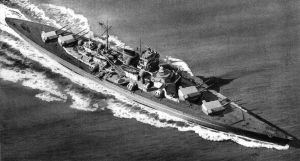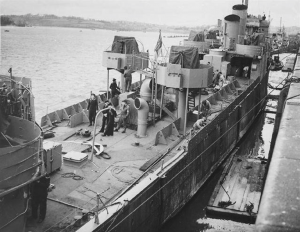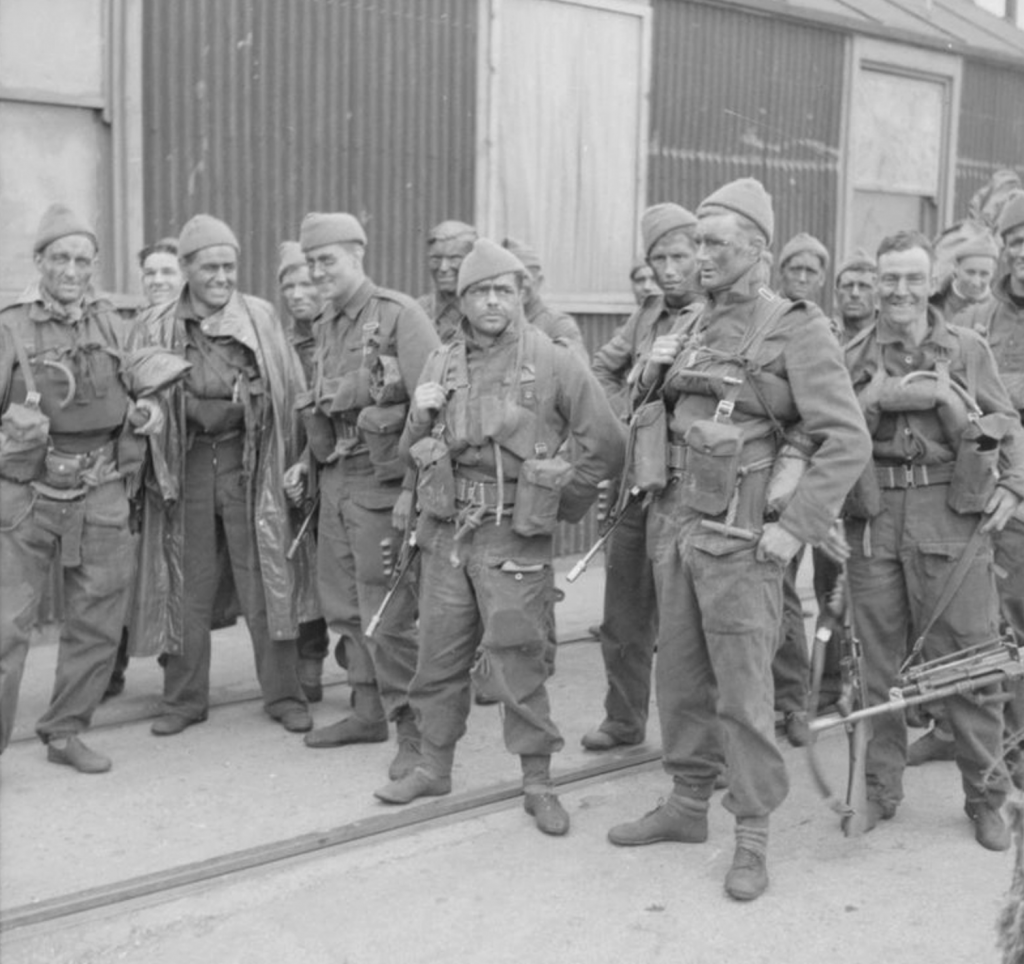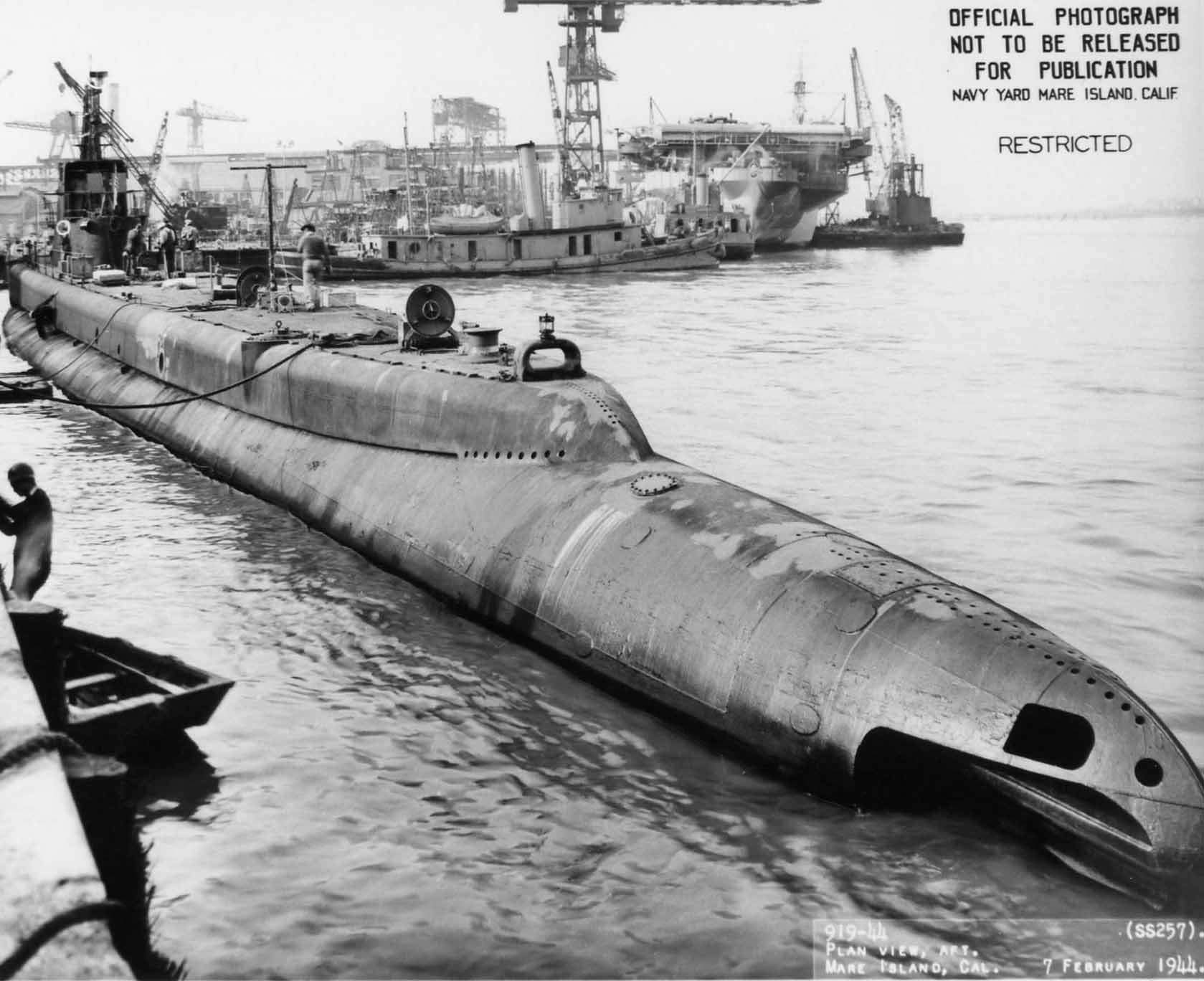On March 28, 1942, British forces rammed an obsolete destroyer laden with explosives into heavily defended dry docks at St Nazaire in German-occupied France. The state-of-the-art dry docks were the base of operations for the German U-Boat fleet and the only docks big enough to service the largest German ships, including the battleship Tirpitz, which threatened Atlantic shipping lanes that supplied Britain and Russia. After ramming the dock, British Commandos and sailors launched an assault. During the melee, some 18 smaller vessels intended to transport the commandos back to England were destroyed. The St Nazaire Raid, also known as Operation Chariot, involved 612 British men. More than 200 were captured and taken POW, and nearly 170 died.
By January 1942, German U-Boats were wreaking havoc in the Atlantic shipping lanes. In addition to the U-Boat threat, the mammoth German battleship Tirpitz could outgun or outrun any other warship. She was the sister ship to the recently sunk Bismarck and had sailed into a Trondheim fjord where she also threatened Atlantic convoys. Under the direction of Prime Minister Winston Churchill, British military officials began planning a strategy to neutralize Tirpitz’s threat. The dry docks at St Nazaire were the only docks capable of accommodating the Tirpitz for service and repairs. Officials formed an audacious plan to sail HMS Campbeltown, packed with delayed-action explosives, and ram it into the gates of the dock. Commandos would then disembark and attack other target buildings and facilities.
Plans for an amphibious attack were approved in early March. Work began immediately to disguise the Campbeltown to resemble a German torpedo boat. Workers added armor plating, guns, and time-delayed explosives while the amphibious force of 600 commandos and sailors endured extensive training. On March 26, 1942, the flotilla left England. Around midnight on March 27, British bombers targeted St Nazaire, preparing for the attack. As the Campbeltown approached St Nazaire in the early hours of March 28, they relayed through captured secret codes that they were a friendly vessel. When German soldiers realized the ruse, the counterattack began in earnest. The Campbeltown powered ahead, tearing through an anti-submarine net before crashing into the gates of the dock. Commandos and sailors quickly disembarked and engaged German forces. Meanwhile, smaller vessels moved into position. Many of these vessels were constructed of mahogany, and the incoming fire ignited their fuel tanks leading to horrific losses. British forces went to work targeting anti-aircraft gun installations, pumping stations, and other targets. The Germans responded with a tough defense, eventually pushing the British back to the docks. With so many landing vessels destroyed, 169 British sailors and Commandos died, and 265 were captured and taken POW.
Shortly past 10:00 a.m. the following morning, German forces were inspecting the damage caused by the Campbeltown when more than four tons of delayed-action explosives ignited. The subsequent explosion killed more than 300 German soldiers and civilians. The dock at St Nazaire was destroyed and rendered inoperable for the remainder of the war. The raiders of St Nazaire were heralded as heroic, with nearly 90 members of the raiding party awarded decorations, including five Victoria Crosses.
If you would like to learn more about the raid at St Nazaire or other WWII battles, search Fold3® today.







